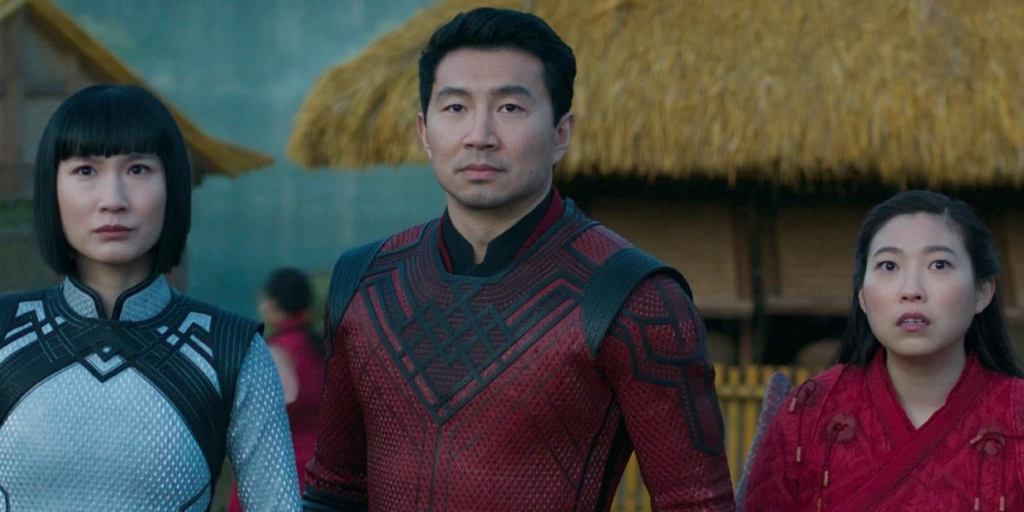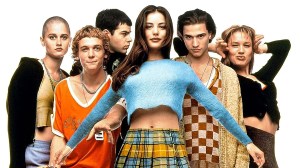Grief is a universal experience. At some point in everyone’s life, we all suffer a loss that shifts our experience with the world and our place within it. But even though the grief of loss is a trauma that we all experience, how we process through it varies. It can be a direct process that people move through steadily or it can be more prolonged and complicated — indeed, there’s even a recognized mental health condition in the DSM-5 called Prolonged Grief Disorder — but its universality also makes it a rich ground for storytelling, and as stories go there are few major entertainment franchises that approach grief and loss better than the Marvel Cinematic Universe. Across all of the films and projects within the MCU there is some aspect of dealing with grief. After all, loss is an integral part of any hero’s journey, but it’s been in recent years that the MCU has taken its explorations of grief to the next level. Phase Four in particular, while perhaps not narratively as connected as its preceding Phases, has a particular connection to the process of grieving that is a bit unlike anything before it: Phase Four of the Marvel Cinematic Universe doesn’t simply tell stories of loss, of grief, and of love persevering but instead follows the actual grieving process, all seven stages of it.
Videos by ComicBook.com
Before we dive into how Phase Four follows the stages of grief, it’s important to understand the idea of the seven stages of grief. Most people, when discussing the stages of grief, think of the “five stages of grief”, better known as the Kubler-Ross model which was first introduced in the 1969 book On Death and Dying. However, while most people are familiar with the five stages, the stages were later revised to add two additional stages, additions that allow people to better explain loss, which is frequently both complicated and difficult. Specifically, the seven stages model adds a stage for “shock and disbelief” as well as a “reconstruction” stage — a small subdivision of some of the previously established five stages, though there is also some variance in what the specific codified “stages” actually are. As with the five stages, people do not have to experience all seven stages nor do they have to experience them in order. For our purposes here, we are using some very general “stages” mostly as a way to somewhat organize the chaos that is the grieving process.
But what’s interesting about Phase Four — specifically the feature-length films, which are what we’re discussing here — is that they actually work somewhat in order based on their release. Starting with Black Widow and ending with Black Panther: Wakanda Forever, Phase Four offers a complete look at the grieving process from start to “finish”, all while each film individually breaks down grief within the confines of its own story as well. Again, grief is a very personal experience and one that is difficult to organize in a process, but Phase Four does a fantastic job of exploring the journey through its films, taking viewers on a multi-faceted approach to what it’s like to explore loss and come out the other side.
Stage 1: Shock and Disbelief — Black Widow

The first film released as part of Phase 4, Black Widow comes at a difficult time, narratively, for the franchise. The world — and indeed the entire universe — is still reeling from the events of Avengers: Infinity War and Avengers: Endgame and fans are still reeling as well. Endgame saw the deaths of two major heroes, Tony Stark/Iron Man (Robert Downey, Jr.) and Natasha Romanoff/Black Widow (Scarlett Johansson).
Both losses are still top of mind as we head into Black Widow and in many ways the film reflects that. The film takes us into Natasha’s life both as a child and as an adult before The Snap (the film is set in 2016), giving viewers a window into the events that made her into the hero that sacrificed herself for the Soul Stone. It isn’t exactly a story centered in denial but one in shock and disbelief. It’s difficult to believe that Natasha is really gone as you watch the film, especially with the film ending with Natasha heading off to free the imprisoned Avengers.
The stage of shock and disbelief is often characterized by people behaving normally and without a lot of emotion because the realization that someone is gone hasn’t fully sunk in just yet and that’s something that fits the bill here: we’re watching Natasha as though she’s alive and well and this is just another chapter of her story. It isn’t until the end that we really have to start processing that she’s gone.
Stage 2: Denial — Shang-Chi and the Legend of the Ten Rings

As the stages of grief go, denial is one that pretty much everyone agrees on and it’s also the stage that Shang-Chi and the Legend of the Ten Rings most exemplifies. The film introduces us to Xu Shang-Chi (Simu Liu), but Shang-Chi is himself in a form of denial of self. We find him living in San Francisco, having run away from his father Xu Wenwu (Tony Leung) where he’s living as “Shaun”. As Shaun, Shang-Chi is trying to avoid his father and his destiny in the film, but as is often the case, both come knocking. He ultimately finds himself embracing who he really is.
The stage of denial is often characterized by the feeling that they know something happened, but it doesn’t seem real — or that they can avoid dealing with that thing that feels “wrong”. It’s a stage that can be combined with shock and disbelief, something that we see a bit of in this film.
Stage 3: Anger — Eternals

Another stage of grief that is universally agreed upon is anger, though in terms of how the MCU’s Phase Four incorporates it, this one might be a little less agreed upon. Characterized by feelings of frustration and also by being the emotion that many often feel that they need to most minimize or hide from others, anger can be a confusing feeling as one grieves loss. How Eternals best exemplifies this stage of grief is less in direct expression of anger, but more in the sense of disorientation and confusion, though there are moments where genuine anger come through.
The film sees the Eternals Sersi, Sprite, and Ikaris travel to South Dakota to reunite with their leader, Ajak after an attack by the Deviant Kro only to find Ajak dead. Sersi is chosen to be the new leader of the Eternals and discovers the truth of their mission to Earth. Ultimately, this discovery sees the Eternals fracture as a group as they discover that Ikaris knew the truth and killed Ajak as a result. One could argue that Ikaris’ action in leading the Deviants to Ajak and causing her death as well as his actions later in the film in opposition to Sersi and the others’ attempts to stop the Emergence once they know the truth are actually classic manifestations of anger in that he is seeking control of the situation and environment. It’s a complicated stage of the grieving process — and Eternals is a complicated movie.
Stage 4: Bargaining — Spider-Man: No Way Home

This might be the most direct correlation between the stages of grief and Phase Four of the MCU. In Spider-Man: No Way Home, Peter Parker wants just one thing: he wants everyone to forget he’s Spider-Man and it’s a pretty direct embodiment of the stage of bargaining. The stage of grief is usually characterized by the sense of trying to plead with the universe that if you just do things differently or better, things will be set right which is something that can take different forms including the promise to change behaviors, intervene in different ways, or even carry out extraordinary acts to right wrongs all in the aim of somehow finding a reason for the loss or even reversing it.
In No Way Home, Peter (Tom Holland) initially attempts bargaining by asking Doctor Strange to cast a spell to make people forget he’s Spider-Man and when that ends up going awry and results in villains from other universes arriving in this one, prompts Peter to try to cure them and save them from their deaths, thus changing their fates. Interestingly, while No Way Home is itself an example of bargaining in the MCU, it is also an example of most of the stages of grief complete within the film itself. The film sees the tragic death of Aunt May as well as Peter ultimately losing his friends and support system who end up with no memory of him, though Peter is able to save the multiverse. Instead of being beaten down by this, the film ends with Peter starting over and moving forward and beyond his losses.
Stage 5: Depression — Doctor Strange and the Multiverse of Madness

It’s almost inaccurate to call depression a “stage” of grief. It’s almost something that one feels throughout the entirety of the process, a feeling that can ebb and flow as we work through the complexities of the experience. For some, it can be a temporary experience that manifests in questioning the meaning of life or a feeling of sadness that is too much to bear. For others, it can be a sense of anxiety or a feeling of hopelessness that causes one to withdraw instead of letting others help you. And it’s that latter part — the withdrawing and not letting others help you during your time of need — that largely helps land Doctor Strange and the Multiverse of Madness on this list as the Phase Four film that best embodies Depression.
Like many of the Phase Four films, Doctor Strange 2 could fit several stages, but it best fits here because both Doctor Strange and Wanda Maximoff are both characters who are suffering loss — albeit in different forms — and are unwilling to reach out to others for help until it is too late. The film picks up after the events of WandaVision and sees America Chavez chased into the main reality by a demon who is hunting her because she can travel through the multiverse. Doctor Strange, upon recognizing some runes, reaches out to Wanda for help but discovers quickly that she’s behind the attacks and it’s revealed that Wanda, who has become the Scarlet Witch, is trying to reunite with her lost sons, Billy and Tommy who exist in another multiverse. She wants to take control of her other reality self. Strange and Chavez go through the multiverse looking for help and everything culminates in Wanda being shown the error of her ways and bringing down Mount Wundagore, stopping the madness.
This is, obviously, just the high notes. A lot happens in this film, but the big takeaways here are that Wanda is deeply grieving and instead of reaching out to people who she should be able to talk to about the pain of losing her children — even if they are children she created in Westview — she isolates and goes down a darker path. For Strange, he’s still in many respects dealing with the end of his relationship with Christine as well as having lost the role of Sorcerer Supreme and is trying to deal with the Wanda situation mostly by himself. It’s only when he realizes that he has to trust America and her abilities — and encourage the young woman in using them — they are able to reach Wanda. Strange isolated himself in a different way than Wanda did but the isolation was almost just as catastrophic.
Stage 6: Acceptance and Hope — Thor: Love and Thunder

At some point in every grieving process, one reaches a place where they have to accept the loss and the hope for healing can begin. It’s the moment when you know you can’t change things, but you’re ready to start working on finding your new normal. In the MCU’s Phase Four, that moment is Thor: Love and Thunder.
Thor has been through it in the past few years. he beat himself up over not being able to prevent Thanos from wiping out half of the universe’s population. He had unresolved feelings about his ex, Jane Foster. He even had body image issues and anxiety and a myriad of complex feelings and understandably so. It’s part of what sends him off on his adventures with the Guardians of the Galaxy at the end of Avengers: Endgame. Thor: Love and Thunder sees Thor getting back in the game, as it were, when he receives a distress signal from Sif and is informed that Gorr is attacking and killing gods — and that New Asgard is his next target. He ends up teaming up with Jane — who is now the Mighty Thor and also suffering from terminal cancer — Valkyrie, and Korg — to deal with Gorr and save the abducted Asgardian children. The film resolves with the death of Jane as well as Gorr, but very much on both characters’ terms. Jane dies in Thor’s arms allowing both characters closure and acceptance while Gorr’s death allows his lost daughter, Love, to be brought back to life. Love is ultimately adopted by Thor and the pair go off carrying out heroics together. It’s a pretty clear example of Thor accepting the things he’s been through and picking up the pieces to move forward into a new life shaped by his experiences, one that is hopeful and optimistic.
Stage 7: Reconstruction — Black Panther: Wakanda Forever

This final phase is less a phase and is more the backbone of the entire experience. It’s the idea that grief is a process that can take many forms, can take time, and can vary as we rebuild. I am also going to roll the concept of guilt into this stage because it is not uncommon when we actually start moving forward with our lives after loss that we feel guilty for doing so and it’s important to understand that not only is it completely normal to feel guilty, but it is also completely normal to want to move on and that we deserve to do so.
As I’ve said before throughout this piece, almost every film in Phase Four of the MCU has held aspects of the entire multiple stages of grief. Black Panther: Wakanda Forever is no exception and is in many ways perhaps the MCU’s most beautiful expression of what it means to suffer loss and grieve — both on screen and off. The film inhabits a very unique space in that the cast and crew were dealing with real-life loss due to the tragic death of Chadwick Boseman as they were making the film which depicted the death of T’Challa. As such the story captured a very honest grieving process, but in terms of how it fits this “final” stage of grief, that centers around Shuri. We see Shuri deal with every stage in this process. She deals with an onslaught of shock, disbelief, anger, denial, and bargaining almost immediately in the film when she frantically tries to find a cure for her brother’s illness and is unable to do so. We see her denial at its height when she refuses to burn her mourning garments — and we also see her depression there as well. We also see her anger when her mother dies due to Namor’s attack and it prompts her to lash out against Namor and the Talokanil only for that anger to morph into a sort of acceptance, an acceptance that turns to hope when she discovers that her brother had a son. It’s the final image of Shuri in Black Panther: Wakanda Forever that very much encapsulates the experience of grief. She’s visibly exhausted and emotional and hopeful and wary and relieved and even confused, but there’s a power there, almost a clean slate as it were. A chapter is closed, ready for a new story to be written.
—
What do you think? What film do you think best matches each stage of grief? Let us know your thoughts in the comment section.








